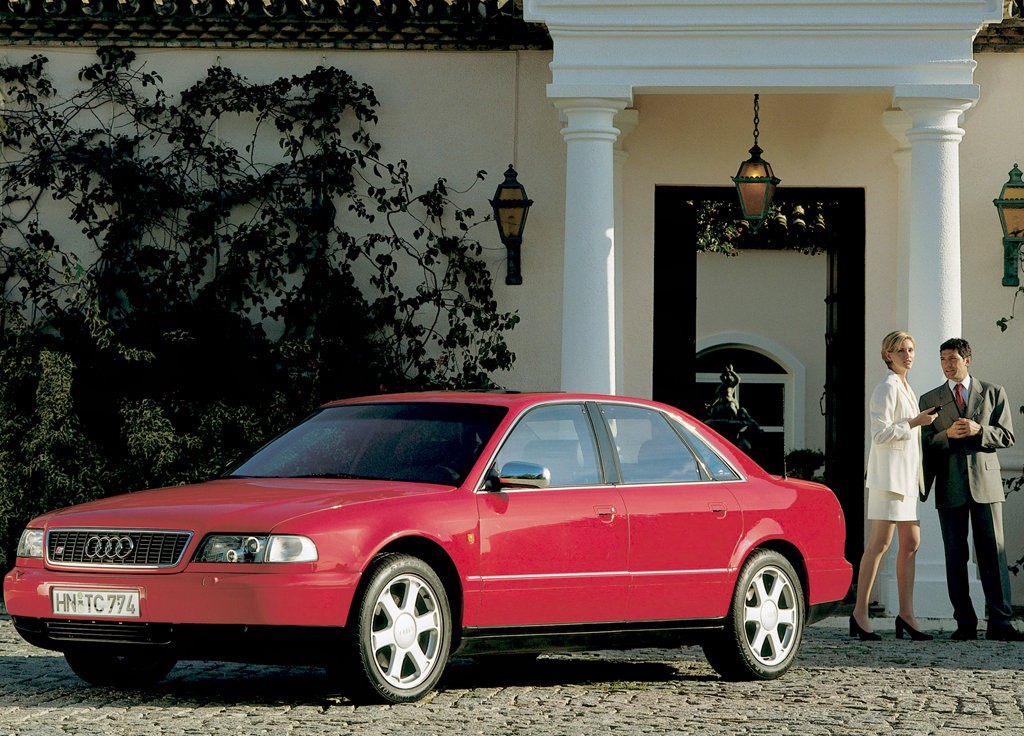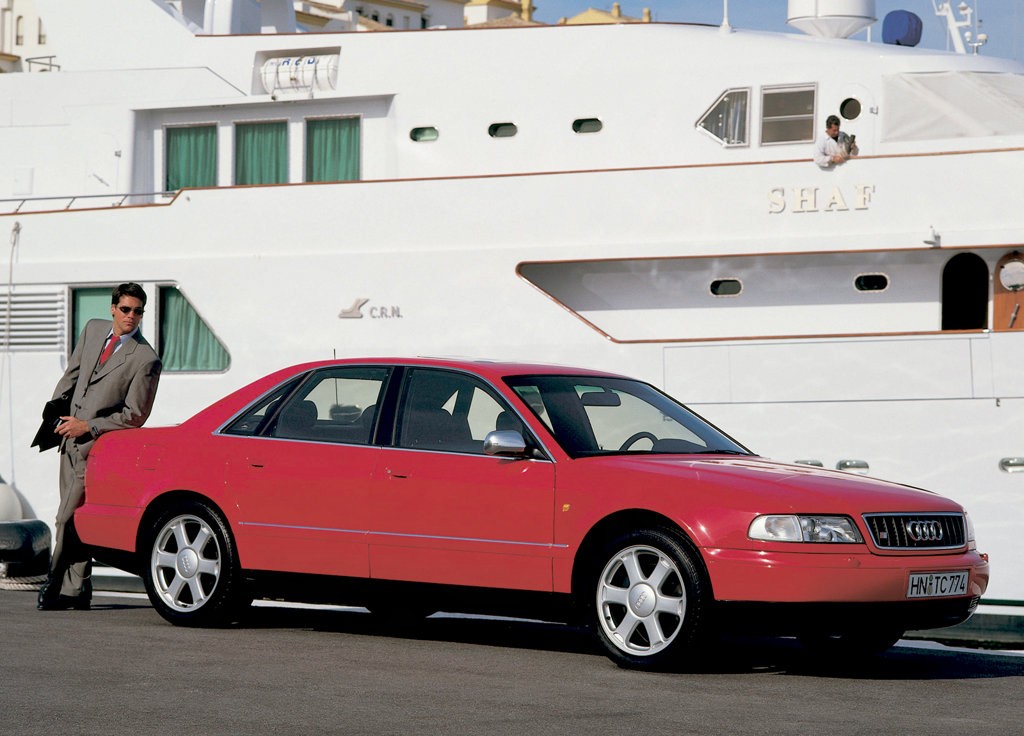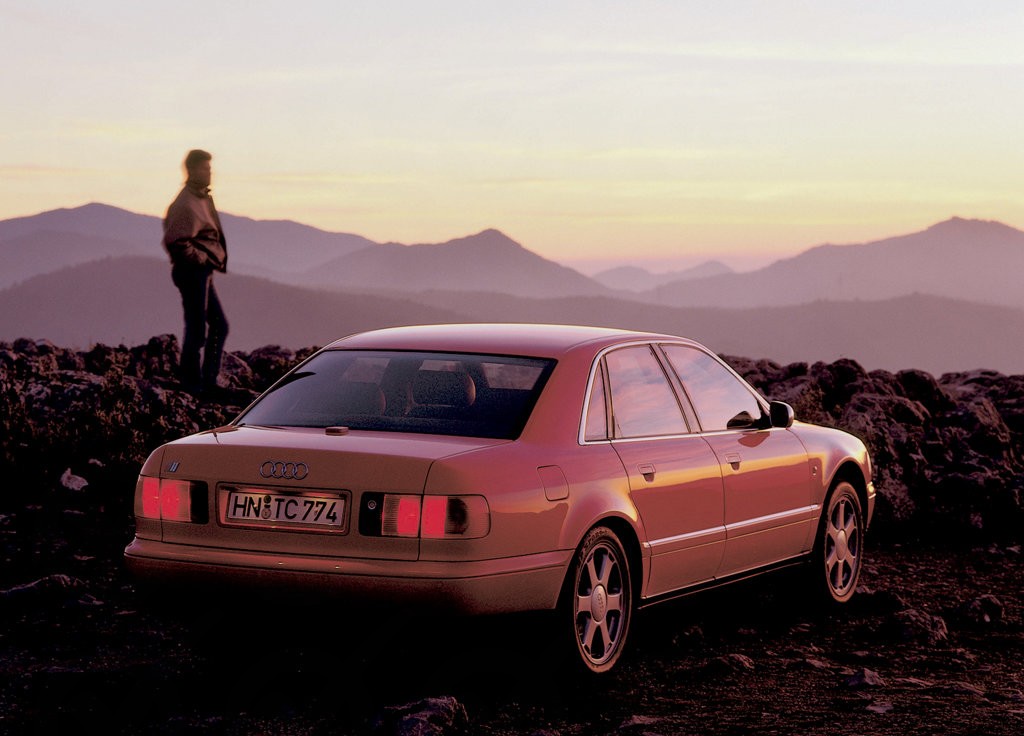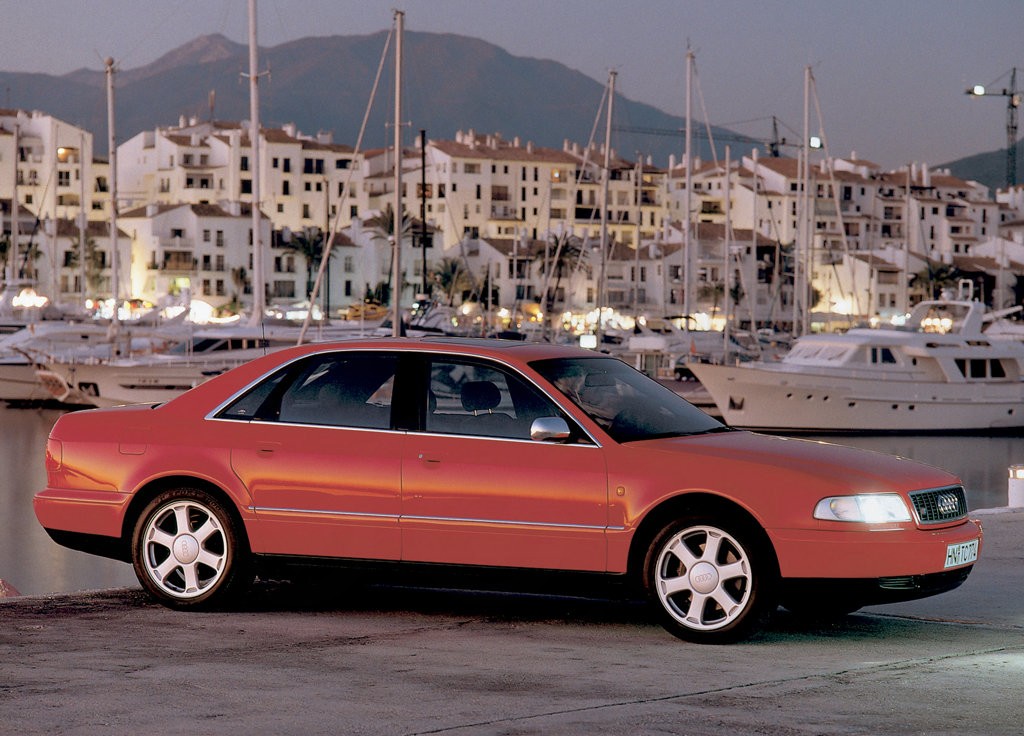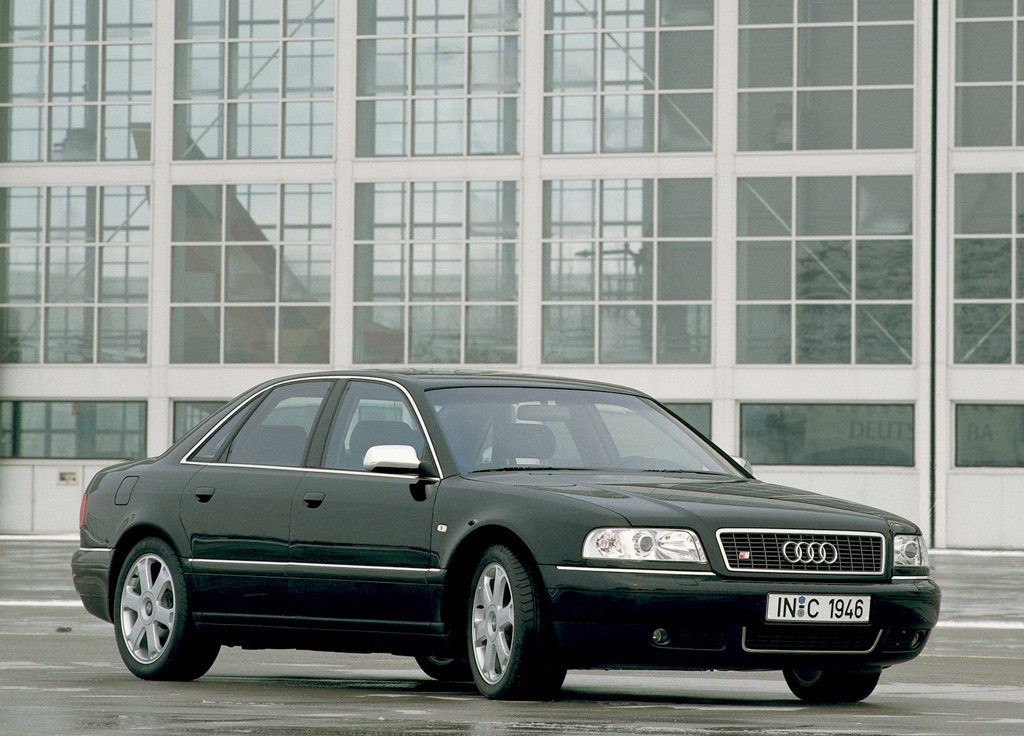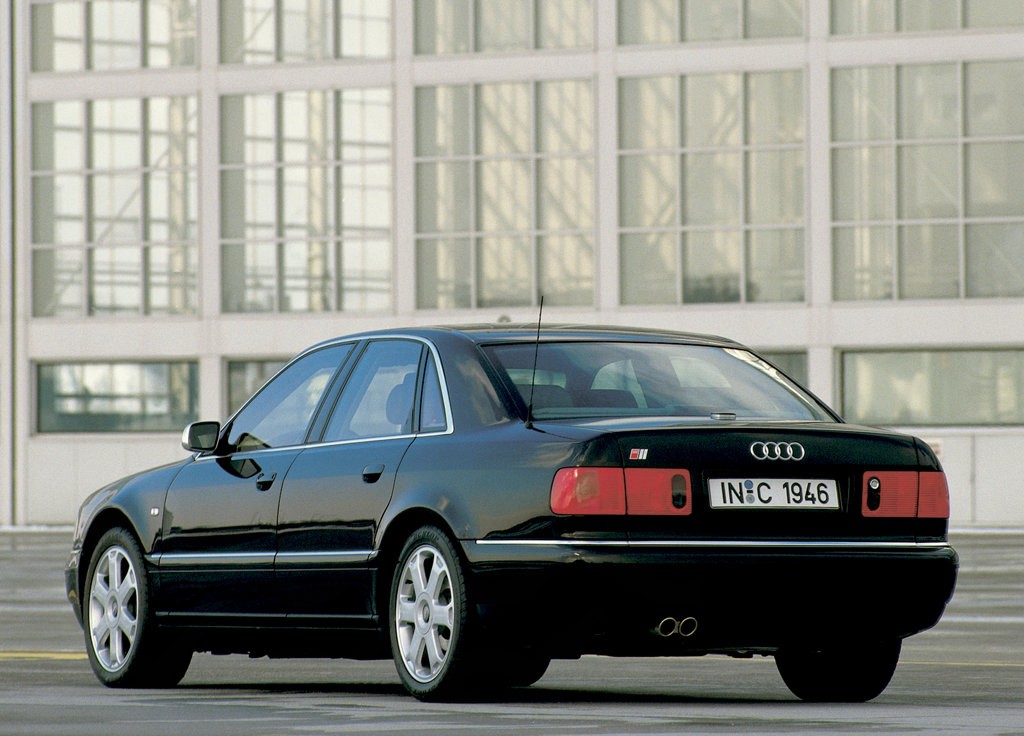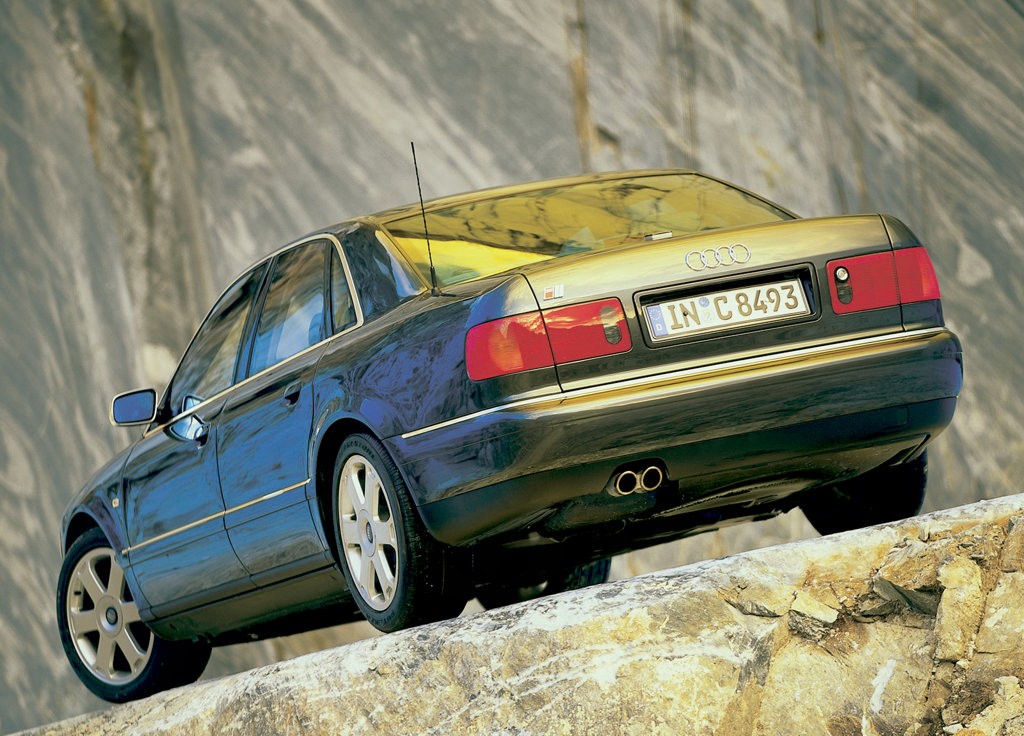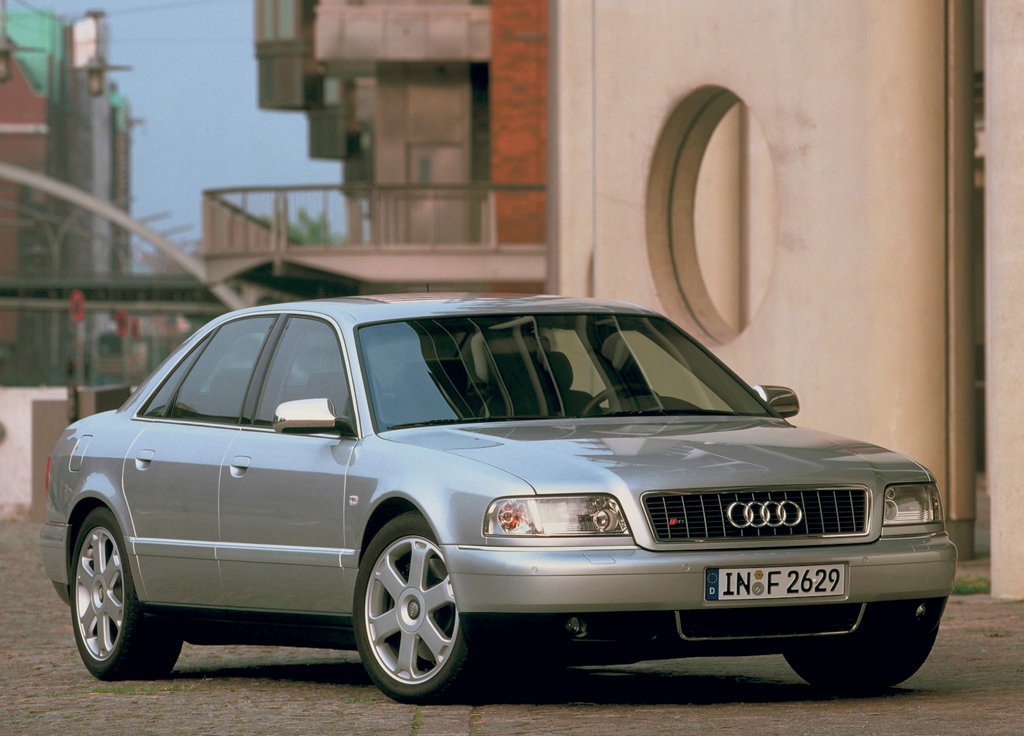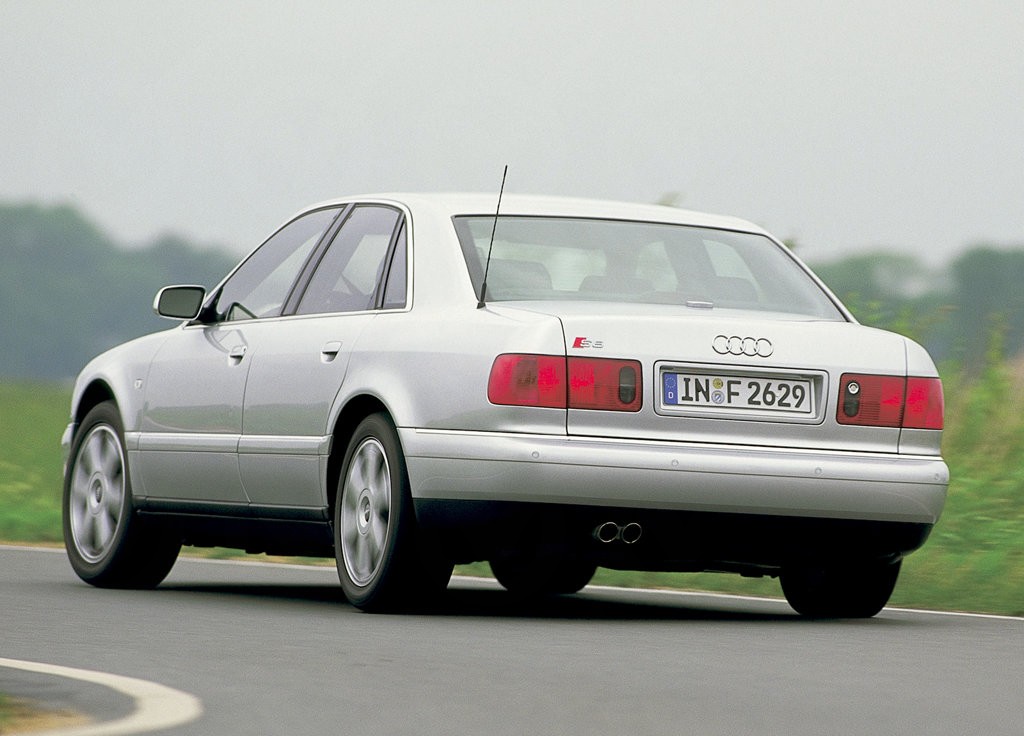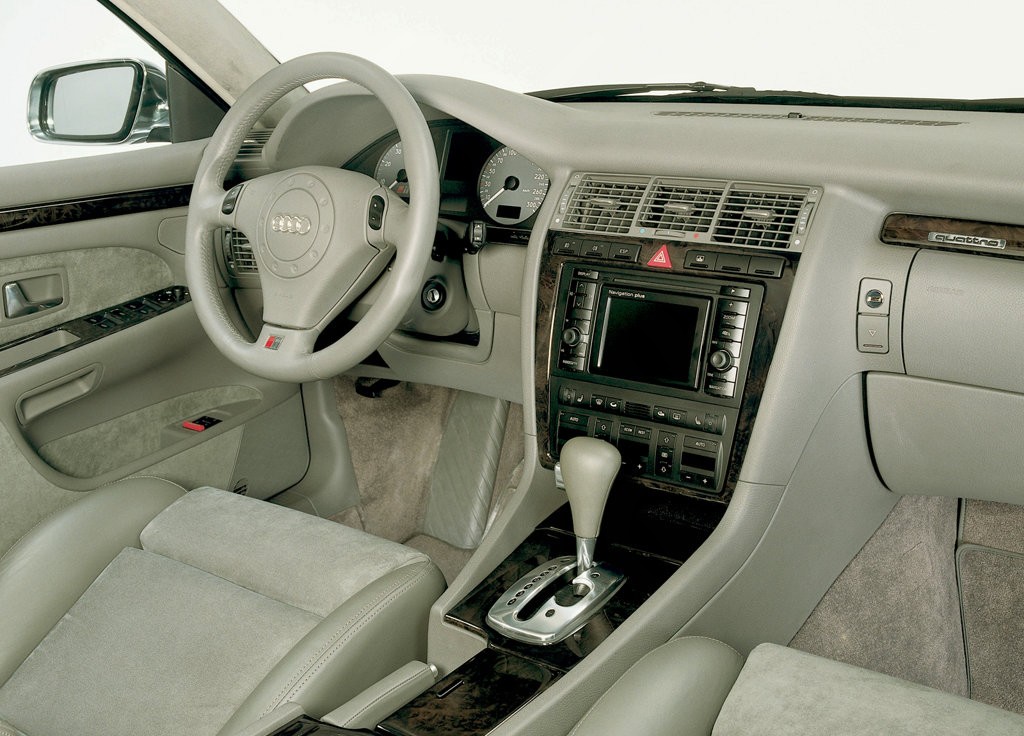
- Refined 4.2-litre V8 petrol engine
- quattro system provides immense traction and stability
- High standard of interior fit and finish
- Slow to downshift
- Overwhelmed by performance of Mercedes W220 S-Class AMG rivals
- High maintenance costs
- Dated styling
Review: Audi D2.I S8 (1998-99)
Overview
Released in July 1998, the Audi D2 Series I (D2.I) S8 was a large, performance sedan. Manufactured in Neckarsulm, the Audi D2 S8 was powered by a 4.2-litre petrol V8 engine that drove all four wheels via Audi’s quattro four-wheel drive system and had a five-speed ZF automatic transmission.
4.2 V8 engine
The Audi D2 S8’s 4.2-litre AHC/AKH V8 engine had a cast aluminium alloy cylinder block, a die-forged steel crankshaft which operated on five main bearings, a cast aluminium alloy cylinder head, double overhead camshafts per cylinder bank driven by a toothed belt and simple chain, four valves per cylinder, a variable intake manifold and a compression ratio of 11.3:1. Furthermore, the engine had a 7000 rpm redline and required 98 RON premium unleaded petrol.
The AHC/AKH engine produced peak outputs of 250 kW at 6600 rpm and 410 Nm at 3500 rpm. However, 90 per cent of peak torque (i.e. 369 Nm) was available from 2900 to 6000 rpm.
| Engine | Drive | Trans. | Peak power | Peak torque |
|---|---|---|---|---|
| 4.2-litre AHC/AKH petrol V8 | quattro | 5sp auto | 250 kW at 6600 rpm | 410 Nm at 3500 rpm |
Dimensions and suspension
Compared to the Audi D2 A8 on which it was based, the S8 was the same length (5034 mm) and width (1880 mm), but was 2 mm lower (1438 mm); wheelbase length was also unchanged at 2882 mm. Furthermore, the D2 S8 had four-link front suspension with double wishbones and independent, trapezoidal link rear suspension.
quattro
The Audi D2 S8’s quattro four-wheel drive system utiltised a self-locking Torsen centre differential and provided a 50:50 front:rear torque in normal conditions. If traction was lost, however, torque could be redirected to the front or rear axle (up to 80 per cent for the latter). Furthermore, both the front and rear differentials had an electronic differential lock which could enable cross-axle torque transfer at speeds of up to 80 km/h.
Safety equipment
Standard safety equipment for the Audi D2.I S8 included dual front airbags, front and rear seat-mounted side airbags, ABS, electronic brake force distribution, electronic stability control, traction control and front seatbelt pretensioners.
Features
Standard features for the Audi D2.I S8 included 18-inch Avus-style alloy wheels with 245/45 tyres, an eight speaker stereo with a six-disc CD player, dual-zone climate control air conditioning, premium silk nappa leather upholstery, power adjustable front seats, cruise control, xenon headlights, front fog lights, a three-spoke leather-wrapped steering wheel, remote central locking, power mirrors and windows, power sunroof, a tilt adjustable steering wheel, myrtle woodgrain paneling, a trip computer, an alarm and immobiliser.
Review: Audi D2.II S8 (1999-03)
Overview
Released in December 1999, the Audi D2 Series II (D2.II) S8 introduced a new 4.2-litre V8 engine and additional safety equipment and features. The AQH, AVP, AYS and BCS engines introduced a new cylinder head with five valves per cylinder that were actuated by roller rocker cam followers; the engine also had revised timing for the intake camshafts, a compression ratio of 11.0:1 and maximum engine speed of 7200 rpm.
| Engine | Drive | Trans. | Peak power | Peak torque |
|---|---|---|---|---|
| 4.2-litre AQH/AVP/ AYS/BCS petrol V8 |
quattro | 5sp auto | 265 kW at 7000 rpm | 430 Nm at 3400 rpm |
Safety equipment
Compared to its D2.I predecessor, standard safety equipment for the Audi D2.II S8 was extended to include full-length curtain airbags (i.e. for front and rear occupants). The brakes were also upgraded for greater stopping power.
Features
Standard features were also extended to include a Bose sound system with a six-disc CD player, satellite navigation system with a five-inch colour monitor and TV tuner, fully-integrated mobile telephone with hands-free facility, heated front seats with memory settings and front and rear parking sensors.
Related links
